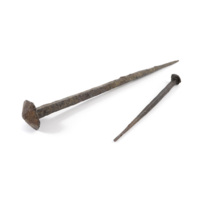R - Rock to Roman

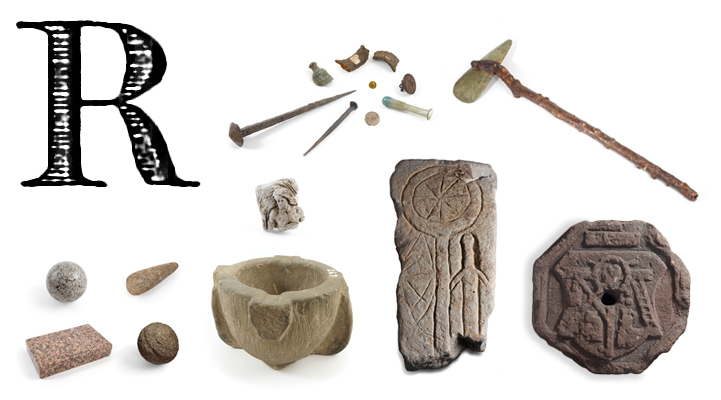

rock n
A general term for the solid material that forms the Earth's crust.
Aberdeen is built on granite. The cold enduring strength of the rock is reflected in the character of the city. Elgin is built on sandstone, a softer material more given to flamboyance. Both the strength and the flamboyance are part of the North East landscape and people.
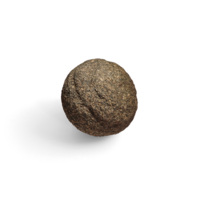
Granite carved stone ball, Hill of Logie, Aberdeenshire (c2500BC).
ABDUA:15600
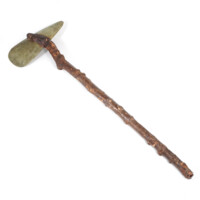
Jadeite axe head, possibly imported, with replica haft added in the 19th or 20th century. Aberdeenshire (4000-2400BC).
ABDUA:37080
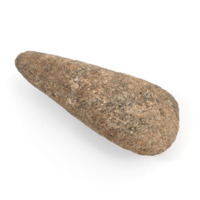
Granite axe head, Aberchirder, Banffshire (4000-2000BC).
ABDUA:19817
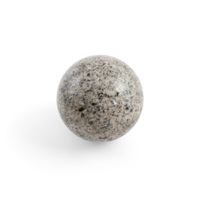
Ball made of Kemnay granite, Aberdeen (19th cent.)
ABDUA:36855
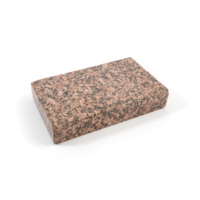
Block made of Peterhead granite, Peterhead (late 19th - early 20th cent.)
ABDUA:36856

Roman adj of or pertaining to Rome esp
1 the ~ Empire or
2 the ~ Catholic church
The Roman armies marched into the North East Scotland several times between the late 1st and 3rd centuries AD but they never stayed and the area was never part of the Roman Empire. The military campaigns are only marked by the faint traces of the temporary camps, usually only visible in aerial photographs. Stray finds such as the gold coin found on the route of the armies' march may mark their passing - or may have been bribes to native inhabitants. The glass bottle from Kinnord may represent more peaceful contacts such as trade or barter.
The Roman legacy is still with us. The ideas of classical Rome can still be seen in some of our laws, institutions (including this university) and religious practices. The Roman Catholic Church, which is part of this legacy, has left many traces in the North East.
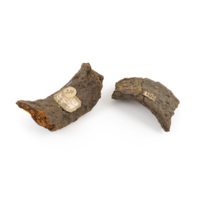
Axle loops, identified in the 19th century - probably incorrectly - as being from the chariot of Calgacus who led the northern Celts in an ill-fated stand against the Romans in 83AD. Raedykes, Kincardine.
ABDUA:17637
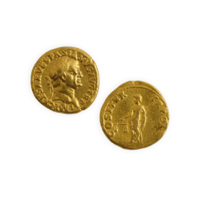
Aureus - gold coin of Vespasian (69-79AD) found at Port Elphinstone, Inverurie.
ABDUA:47477
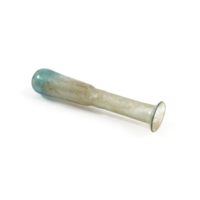
Roman glass bottle found at Loch Kinnord (1st - 2nd cent.)
ABDUA:36857
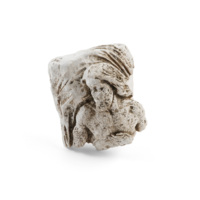
Moulding of Christ from Monymusk Church.
ABDUA:17638
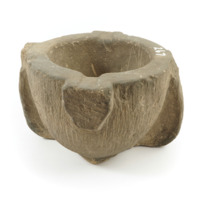
Stone font from Old Greyfriars Kirk, Aberdeen (15th - 17th cent.)
ABDUA:17640
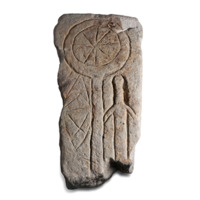
Grave slab from Nether Wardston, St Cyrus, Kincardineshire (possibly 14th cent.)
ABDUA:14097
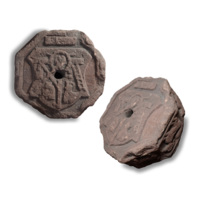
Keystone pendant showing scenes of the Passion from the chapel at Whitehill, New Deer (16th - 17th cent.)
ABDUA:17639
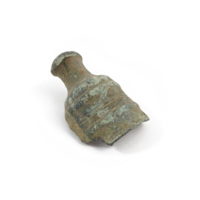
Brass costrel (pilrim's flask) from the Hospital at Kincardine O'Neil (14th - 16th cent.)
ABDUA:17635
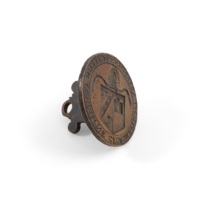
Seal of Bishop George Haliburton, Bishop of Aberdeen (1682-89).
ABDUA:13001
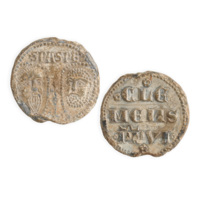
Papal bulla (seal from document) of Clement VI (1342-52) from St Machar's Cathedral, Aberdeen.
ABDUA:13000

